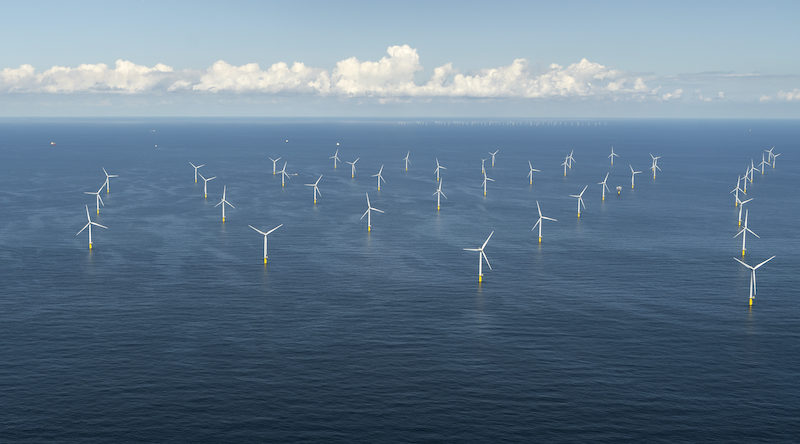
Electrifying Europe with wind energy – towards net-zero by 2050
With the presentation of the European Commission’s “Fit-for-55” package, the EU has set a new pace for the transformation of Europe’s energy system. The goal is to be climate-neutral by 2050, and the method set out in “Fit-for-55” is electrification of the energy system. And whether it’s direct or indirect electrification, the source will be renewables. “Fit-for-55” is a blueprint for accelerating the expansion of renewables across Europe.
The EU envisages that Europe’s electricity will be almost completely zero carbon by 2050. They estimate that electricity will be 57% of the EU’s energy mix and that a further 18% will be electrified indirectly via renewable hydrogen and its derivatives. Large-scale electrification of mobility, heating and industry will lead to an almost threefold increase in the demand for electricity across the EU: from 2,700 terrawatt hours (TWh) today to close to 7,000 TWh by 2050. Take the German chemicals sector: Its electricity demand alone will grow from 60 TWh to 628 TWh by 2050, more than Germany’s entire electricity demand in 2018.
At the same time the EU is determined to clean up the power sector. By 2050 most electricity will come from renewable and low-carbon sources. And wind energy will lead this decarbonisation.
Wind provides 16% of Europe’s electricity today. Already by 2027 it will be the number one source of electricity in the EU; and by 2050 its share in total electricity generation is set to increase to 50%.
Onshore wind will remain the dominant technology. New wind farms, and the repowering of existing wind farms, will boost the EU’s installed onshore wind capacity from 165 gigawatts (GW) today to 1,000 GW by 2050. The EU Commission wants offshore wind to grow by the factor of 20: from 15 GW today to 300 GW by 2050. Bigger turbines and the commercialisation of floating offshore wind will play a key role in this expansion.
The perception of renewable energies has changed fundamentally over the past decade. For a long time energy-intensive industries, such as steel, cement, aluminium, chemicals or fertilisers did not like renewables. They thought wind energy was expensive and that it would mess up the energy system with its “intermittency”. But wind energy has delivered a remarkable cost reduction over the years. It is now among the cheapest sources of electricity in Europe – certainly cheaper than new coal, nuclear or gas. And by reducing taxes and levies on electricity governments can further reduce the costs for consumers. As can the uptake of intelligent, digital battery storage solutions.
Now energy-intensive industries are knocking at our door. They want our cheap electricity to decarbonise their CO2-intensive processes. Take again the chemical sector: chemical giant BASF recently bought shares in Europe’s largest offshore wind farm. They are very clear about the large amounts of renewable energies they need to electrify. And just as importantly, the financial markets gave a vote of confidence: despite the pandemic Europe raised €43bn to finance 20 GW of new wind farms in 2020.
A home run for renewables? Not yet. Europe needs to build 30 GW of new wind per year to reach the 2030 targets set out in the “Fit-for-55” package. As it stands, Europe will only build 15 GW over the years 2021-2025.
We need to overcome several challenges to deliver the EU’s climate promises. And the most ambitious decarbonisation and electrification targets remain purely academic if we don’t solve those. The main bottleneck for new wind energy in the EU is permitting. Across Europe permitting procedures for new wind energy projects are too long and complex today. The EU must help Member States to digitalise, streamline and accelerate their permitting of both onshore and offshore wind farms. And for offshore wind farms, cross-border collaboration on permitting and maritime spatial planning will also be crucial.
And then there is the missing infrastructure. To electrify mobility, heating and industry we need to strengthen and expand electricity grids. Annual investments across all voltage levels of the European power grid need to double over the next thirty years to €80bn a year. Infrastructure is also key to ensuring the buildout of new wind farms. We need to strengthen road infrastructure to facilitate the transports and logistics. And we need to reinforce Europe’s port infrastructure, a key enabler of offshore wind development.
Over the next ten years alone we need to invest €6.5bn in heavy-loading quaysides, deep berths– and in that crucial commodity: space for the large offshore wind components.
Streamlining the permitting processes and reinforcing our grids, roads and port infrastructure are no quick fixes and will cost us some money. But the benefits of renewables-based electrification clearly outweigh those costs. Electrification is the cheapest and most efficient solution to decarbonise our economies. Electrification will reduce the total energy demand of our energy system from 17,400 TWh today to only 7,200 TWh. And it will reduce the EU’s dependence from fossil-fuel imports and make Europe a greener and healthier continent.




